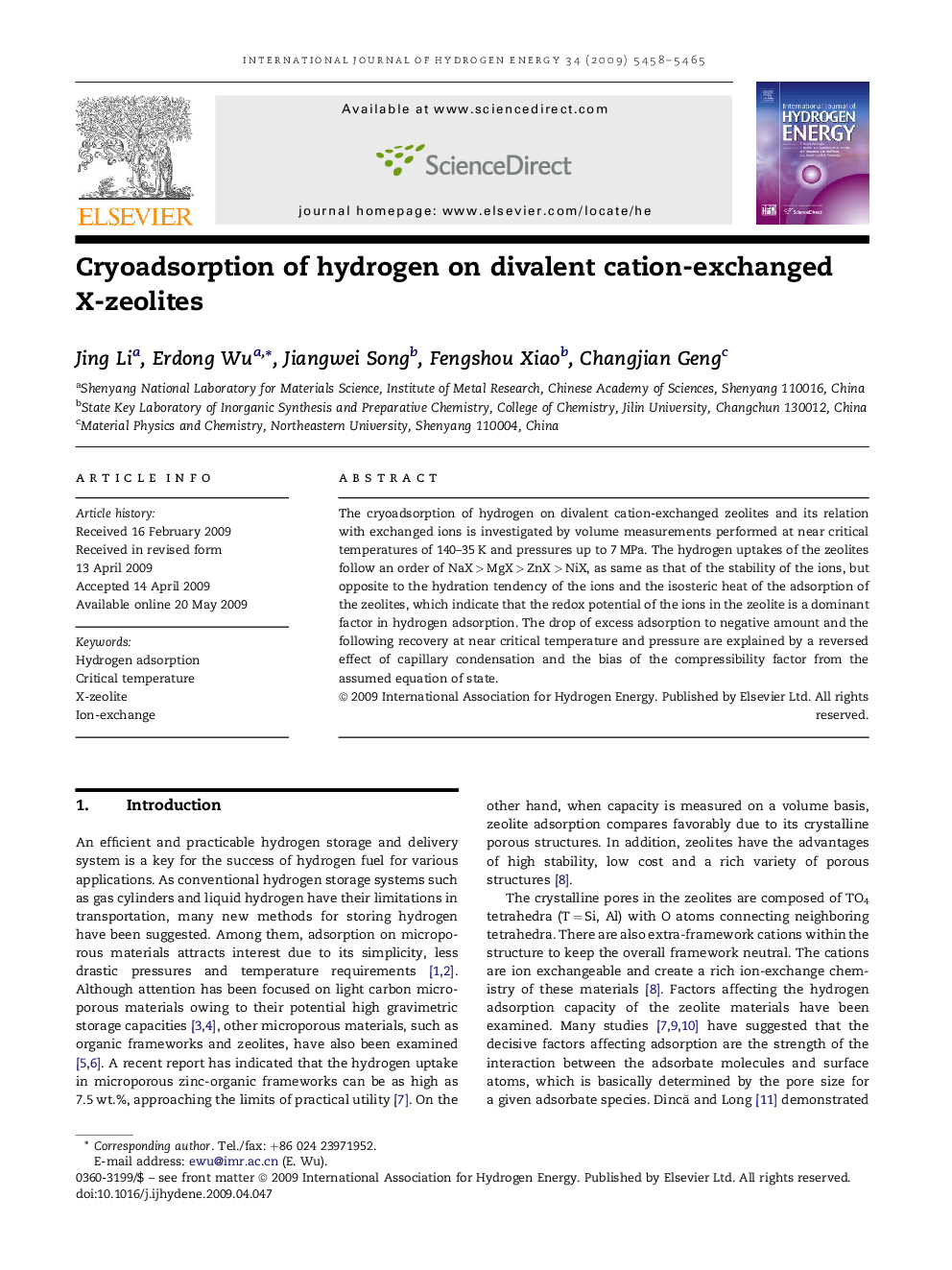| Article ID | Journal | Published Year | Pages | File Type |
|---|---|---|---|---|
| 1283196 | International Journal of Hydrogen Energy | 2009 | 8 Pages |
The cryoadsorption of hydrogen on divalent cation-exchanged zeolites and its relation with exchanged ions is investigated by volume measurements performed at near critical temperatures of 140–35 K and pressures up to 7 MPa. The hydrogen uptakes of the zeolites follow an order of NaX > MgX > ZnX > NiX, as same as that of the stability of the ions, but opposite to the hydration tendency of the ions and the isosteric heat of the adsorption of the zeolites, which indicate that the redox potential of the ions in the zeolite is a dominant factor in hydrogen adsorption. The drop of excess adsorption to negative amount and the following recovery at near critical temperature and pressure are explained by a reversed effect of capillary condensation and the bias of the compressibility factor from the assumed equation of state.
